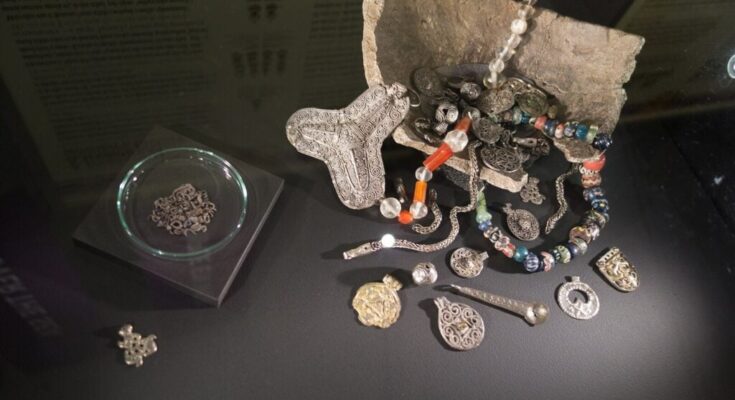
Archaeologists have discovered a stash of ancient Viking treasure buried under the ground for over 1,000 years.
According to a press release from the University of Stavanger (UiS) in Norway, the treasure was found in the Årdal, Hjelmeland municipality in Western Norway. Archaeologists discovered the artifacts after excavating an area where a local farmer had wanted to construct a road. They found the hoard roughly seven inches below the soil.
The Viking treasure
The treasure hoard featured four silver bracelets, each with different intricate decorations. According to the archaeologists, the artifacts were under the floor of an old home that could have belonged to Viking slaves.
“I thought at first there was talk of some twisted copper wires that one can often find in agricultural soil,” said Ola Tengesdal Lygre, one of the field archaeologists who found the bracelets. “But when I saw that there were several adjacent to each other and that they were not at all made of copper but of silver, I realized that we had found something exciting.”
The old house was very well preserved, and other artifacts were recovered. The home was part of a larger Viking farm.
“The excavation shows that there was a large and powerful Viking farm here, consisting of several houses for both people and animals,” said UiS Museum of Archaeology archaeologist Volker Demuth. “We have found remains of soapstone pots, rivets, knife blades, and whetstones for sharpening tools.”
According to archaeologists, the treasure is from the 9th century. This would line up with Norway’s Viking age from 800 to 1050 AD. During this time, the Vikings raided, pillaged, and traded throughout Scandinavia.
The excavation also showed evidence of a fire on the site. Archaeologists suspect that the people in the home could have fled for their lives and buried their treasure in the hopes of returning later.
“If people who lived on this farm had to flee from an attack, it would be natural to hide away the valuables you had before escaping to the mountains,” said Demuth. “And perhaps in a place where you would not have thought that a treasure was hidden.”
The block of earth containing the four bracelets has been taken to a lab, where they will be separated from it under controlled conditions. Initial analysis from the archaeologists shows that the treasure is made of pure silver and shows little evidence of corrosion.
“This is a unique finding, because we very rarely find such objects exactly where they were laid,” said Demuth. “As a rule, such valuable objects are discovered on fields that have been plowed, in which an object is completely taken out of its original context.”



